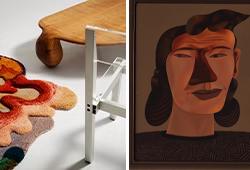Ola Billgren
"Liggande kvinna"
Signed Ola Billgren and dated -95 verso. Oil on canvas 61 x 98 cm.
Alkuperä - Provenienssi
Galleri Glemminge, Ystad, 1990s.
Muut tiedot
The painting presented in this auction, "Liggande kvinna" (Woman reclining) from 1995, incorporates precisely the elements we recognize from Ola Billgren's red period. A strongly reduced yet still recognizable image of a reclining female figure appears through layers of cadmium red that cover the canvas.
Billgren’s paintings are characterized by both duality and ambiguity, in terms of both expression and content, with a dreamlike presence that is unmistakable. His technique emphasizes this by always moving in the borderland between the realistic and the abstract—where these two opposites define Billgren as an artist.
His artistic career goes through several phases, or metamorphoses, which are reflected in his different periods. His early hyper-realistic painting later moves toward a less representational style and culminates in the red period, where the paintings are covered in a bright red color that confronts the viewer. Billgren chooses to reduce the original image, and with the addition of red, he creates a painting that has found its final form through processes of building up and reducing.
The artist himself expresses it this way in the catalog accompanying the 1996 exhibition at Galleri Engström:
“The task of painting is to be a discourse on seeing, not to classify natural objects. This was at least my starting point when, three years ago, I began experimenting with (quasi) monochrome painting in cadmium red. Initially, from the perspective of color experience, it seemed most appropriate to refrain from any representational content, but after some time of exploration, I changed my mind. I had become attached to the color red, mainly due to its paradoxical nature—it simultaneously pleases and attacks, flatters and humiliates the eye. It turned out that the interpretation of this relationship was enhanced by introducing an operator in the form of a simple motif, such as a portrait or interior (faces, furniture, etc.), which energetically appealed to the viewer and added a less peaceful meaning to the act of observation. In this way, by filling the referent’s place, I hope to say something about the visual necessity: about both the will to see and the will to be seen, and additionally to provide an uncensored version of the symbolic register of red. In other words, what I’m trying to do is, through some analysis, get the color to open up semantically, so that its more or less given meanings are illuminated in context.”












































